Enhancing Soft Skills for DevOps Engineers: Essential Non-Technical Skills to Thrive
Influencing Persuasion and Leadership
Section Agenda
Welcome, DevOps soft skills students! I’m Michael Forrester. In this lesson—“Leading with Impact”—we’ll cover how to influence, persuade, and lead teams effectively. Leadership isn’t just about managing systems; it’s about inspiring the people who build, operate, and rely on those solutions.
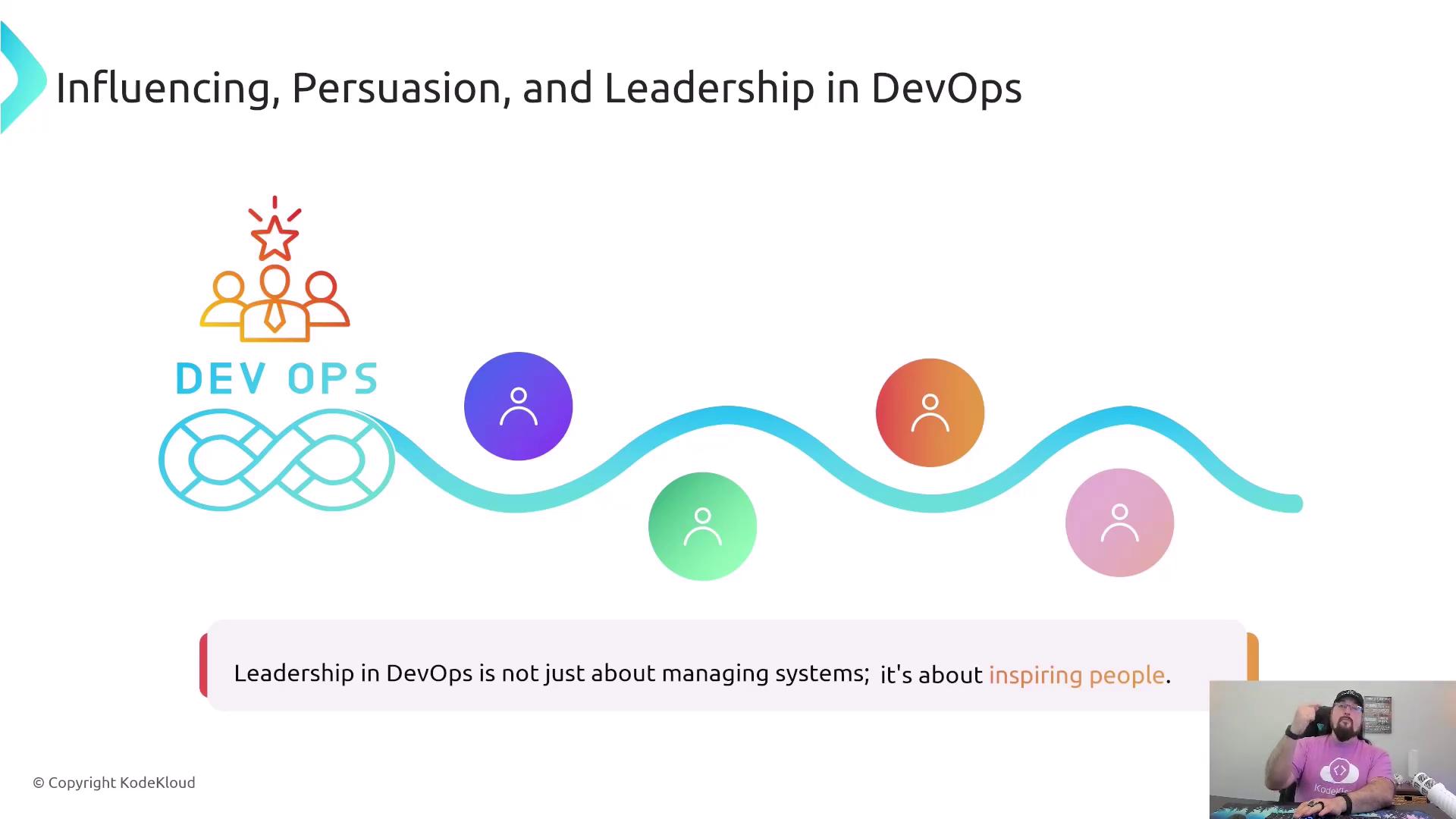
1. Initial Assessment
Begin with a self-evaluation to measure your current influencing and leadership abilities. This helps you identify strengths and areas for improvement before moving forward.
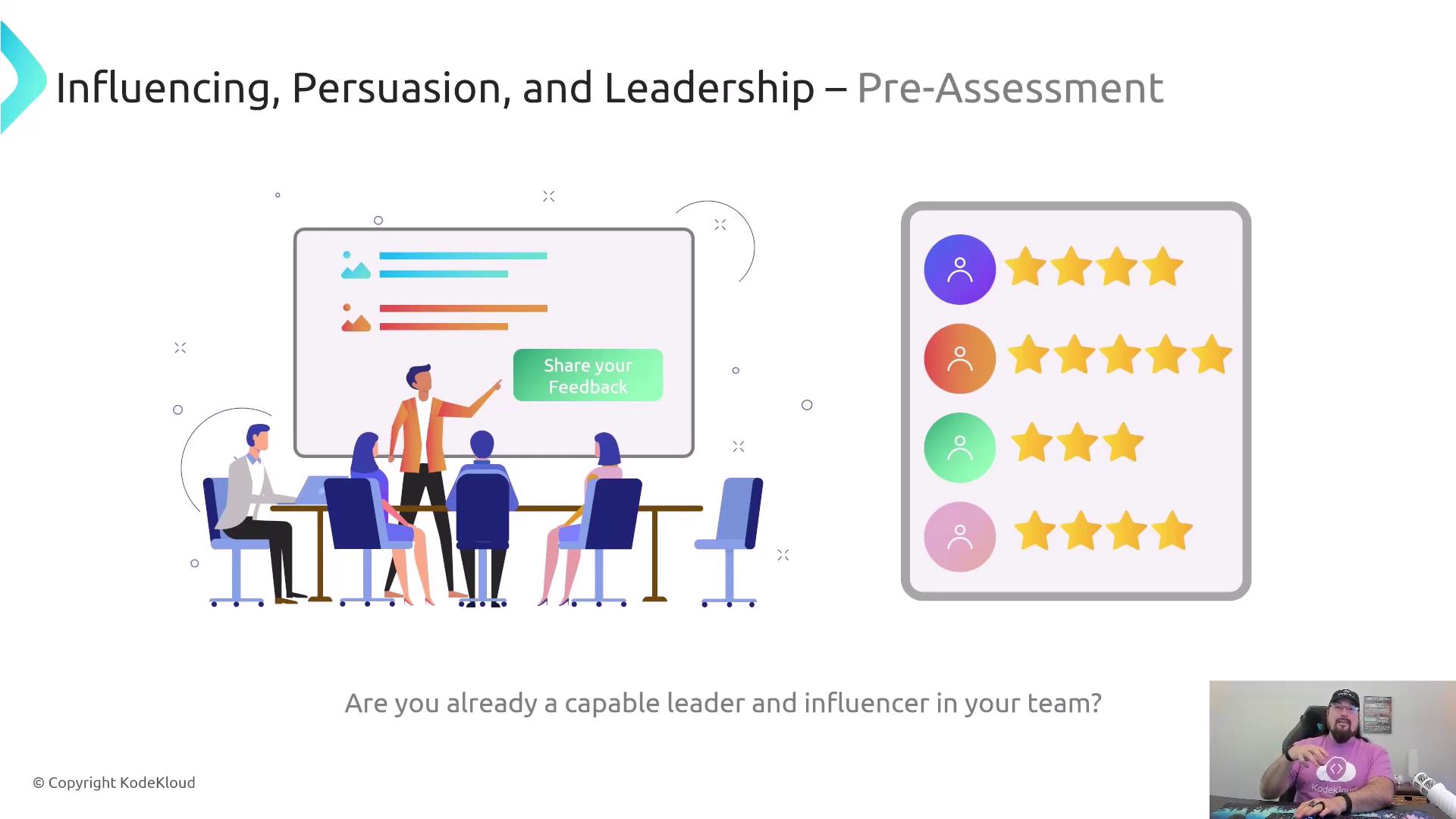
2. Leadership and Empowerment
Effective leaders provide clear guidance, remove obstacles, and build trust. Use the table below as a quick reference:
| Responsibility | Description |
|---|---|
| Guidance | Clarify mission, values, strategy, and vision |
| Support | Remove blockers and provide necessary resources |
| Trust | Foster confidence and grant decision-making autonomy |
![]()
Leaders empower teams to make decisions, excel, and learn within the guardrails of organizational context:
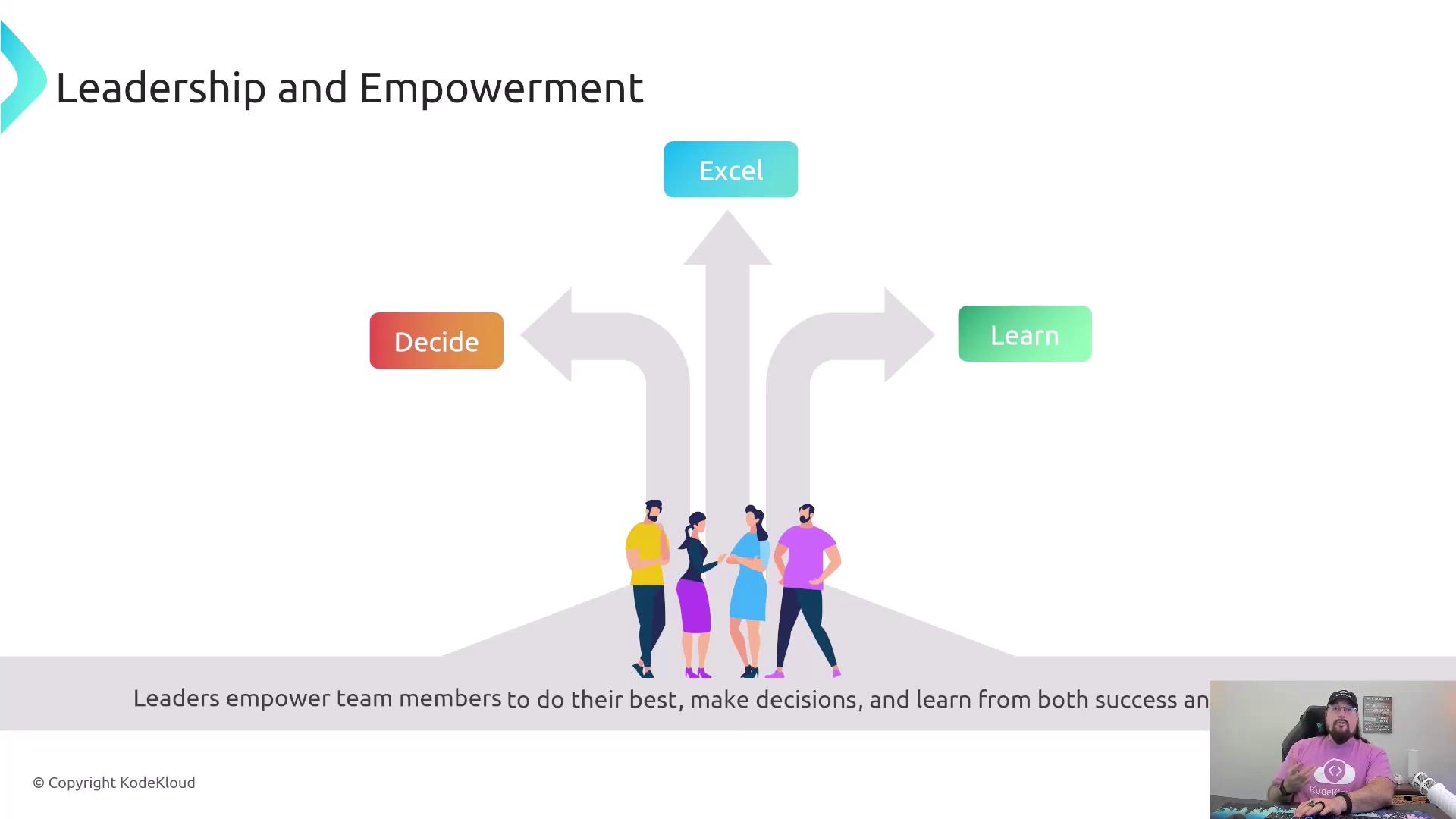
Note
Alignment with organizational goals ensures teams focus on initiatives that deliver real business value.
3. Trust and Safety
Trust is the cornerstone of collaboration, enabling rapid decision-making and organizational agility. Psychological safety encourages experimentation, open feedback, and learning from mistakes.
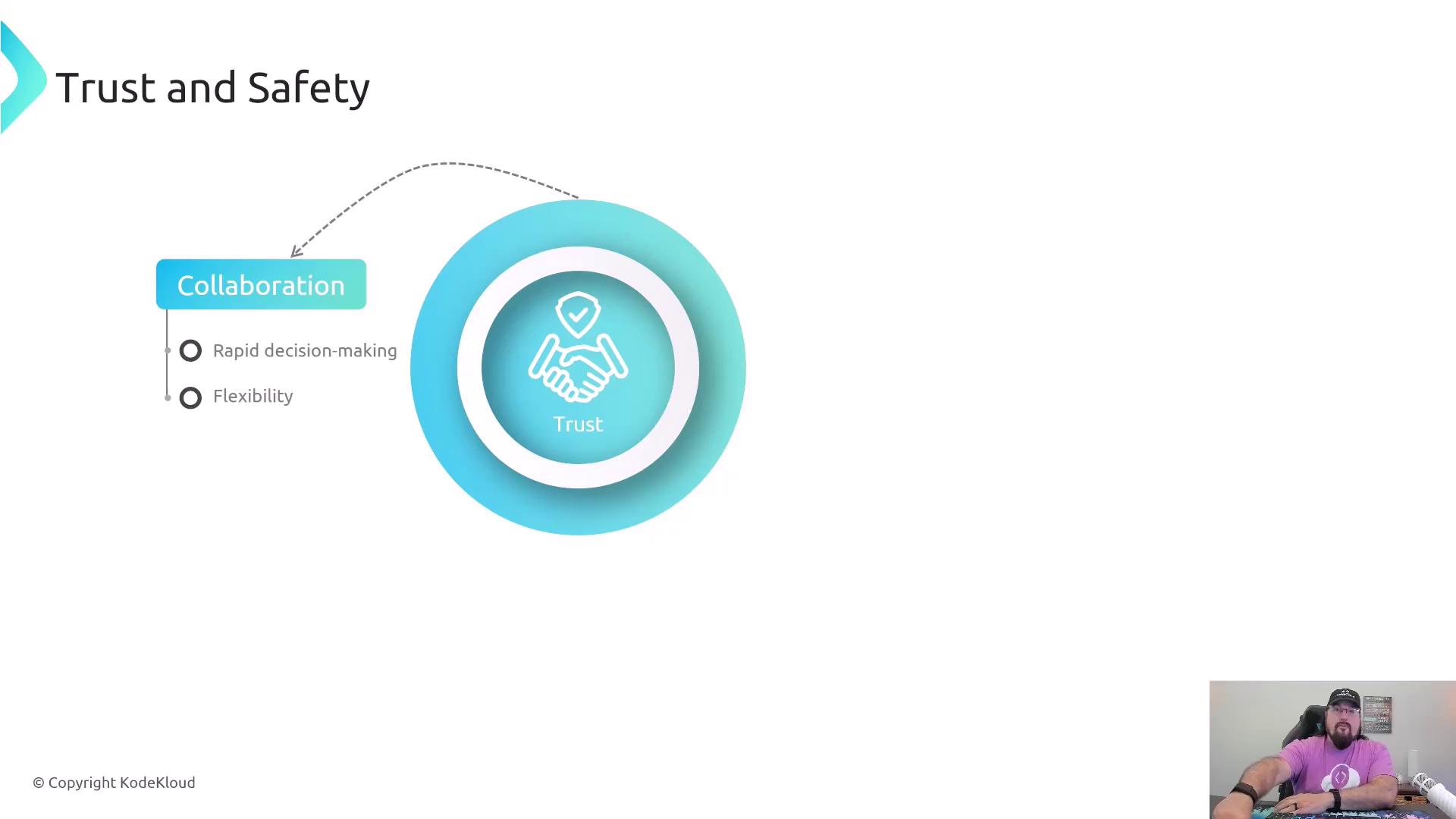
Warning
Suppressing feedback or penalizing failure can erode trust and stifle innovation. Encourage safe-to-fail experiments.
4. Consistency: What You Say vs. What You Do
Credibility stems from aligning your words with your actions. Leaders who follow through on commitments earn lasting respect and influence.
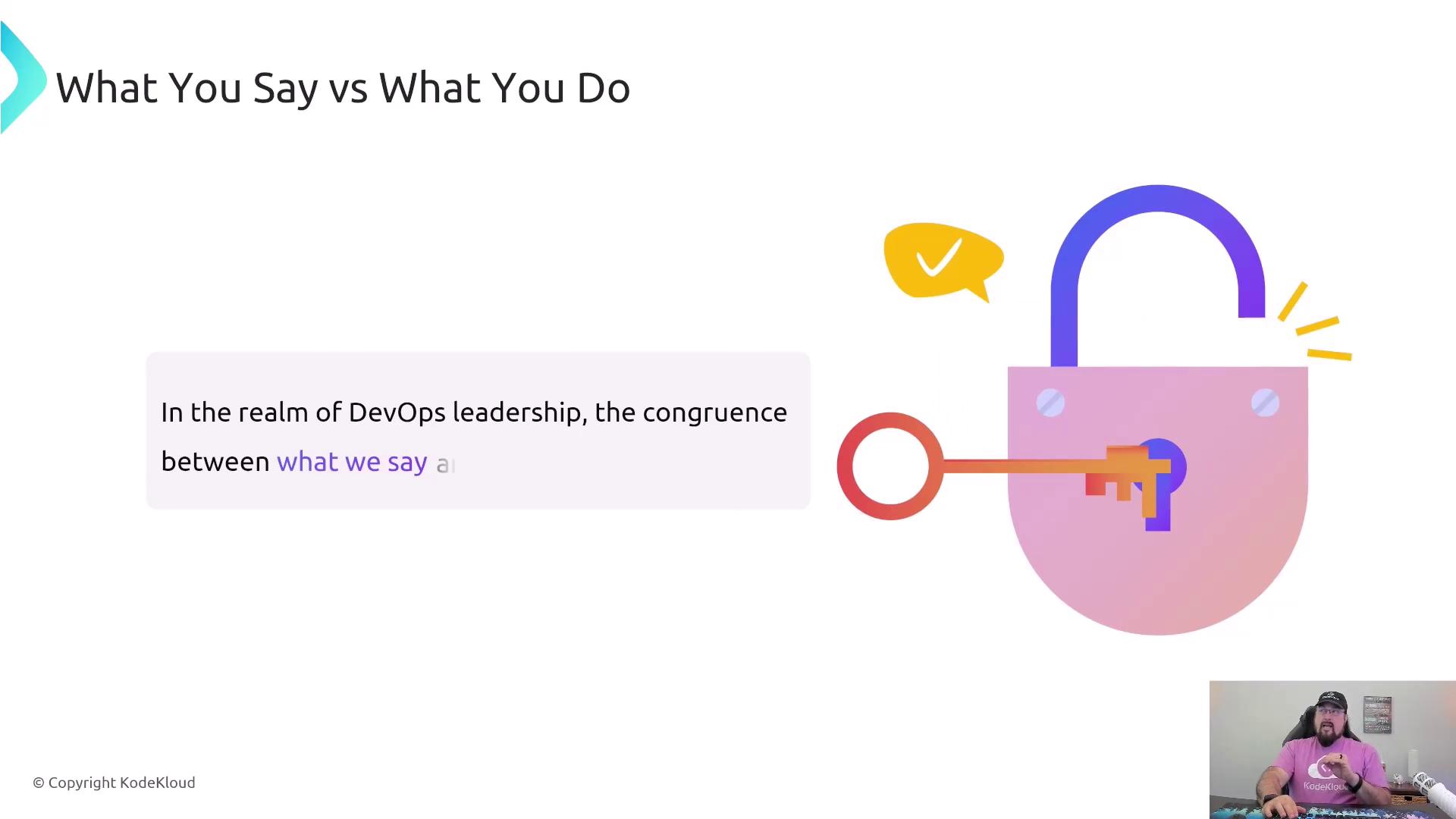
5. Persuasion vs. Manipulation
Ethical persuasion leverages shared goals to motivate teams, while manipulation breaks trust and undermines morale. Focus on transparent communication and mutual benefit.
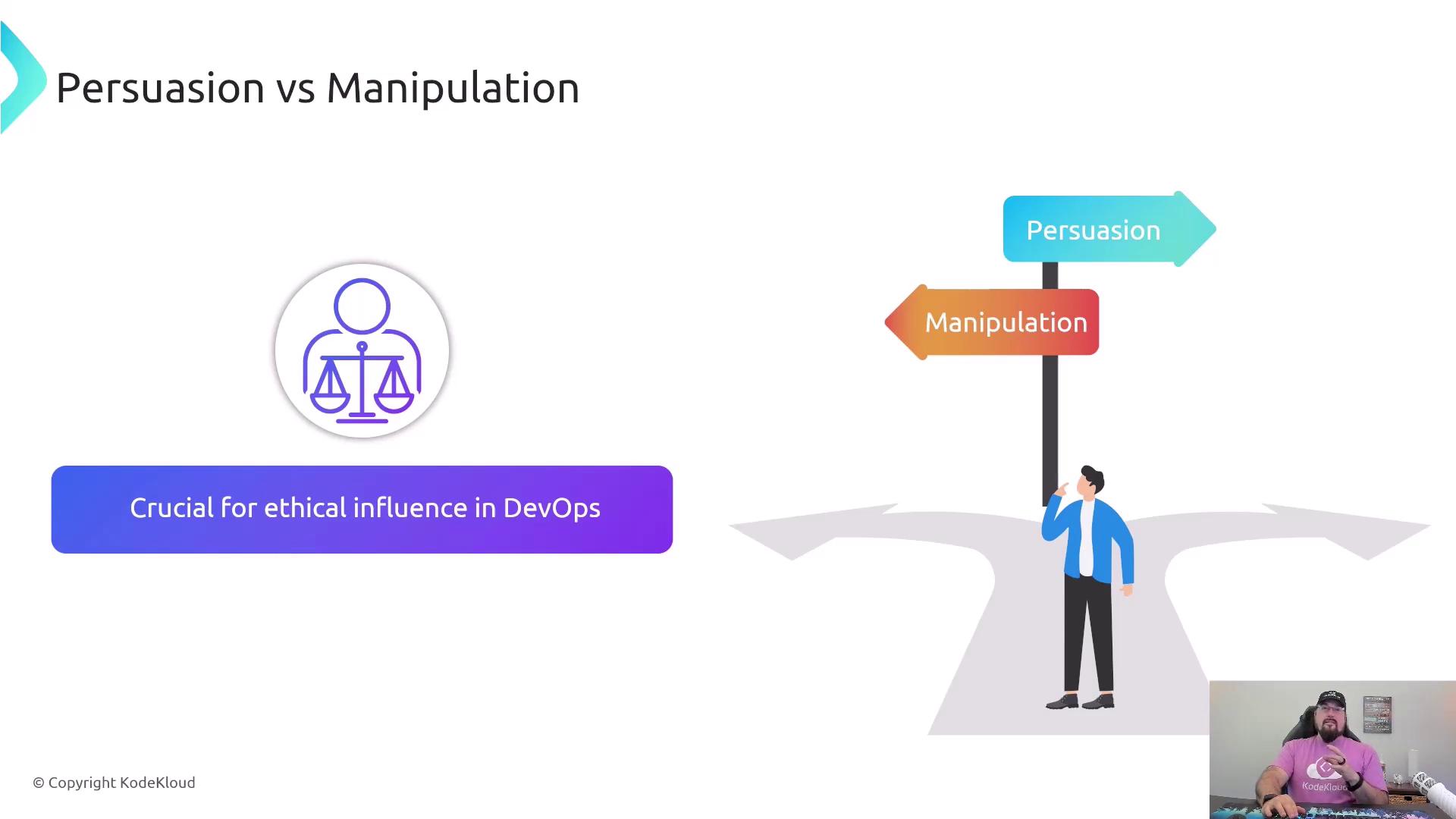
6. DevOps Scenario: The “Loudest Promise”
In practice, leaders make unspoken commitments—“Loudest Promises”—that shape expectations. We’ll explore how respect, dignity, trust, safety, professionalism, and leadership interact in real-world DevOps contexts.
| Element | Impact on Team |
|---|---|
| Respect | Fosters mutual appreciation |
| Dignity | Ensures fair treatment |
| Trust | Enables swift decision-making |
| Safety | Encourages experimentation |
| Professionalism | Upholds standards and accountability |
| Leadership | Guides and empowers toward success |
![]()
7. Final Assessment
Conclude with a second self-assessment focused on leadership, influence, trust, safety, and ethical persuasion. Your results will set the stage for advanced modules on team empowerment and organizational transformation.
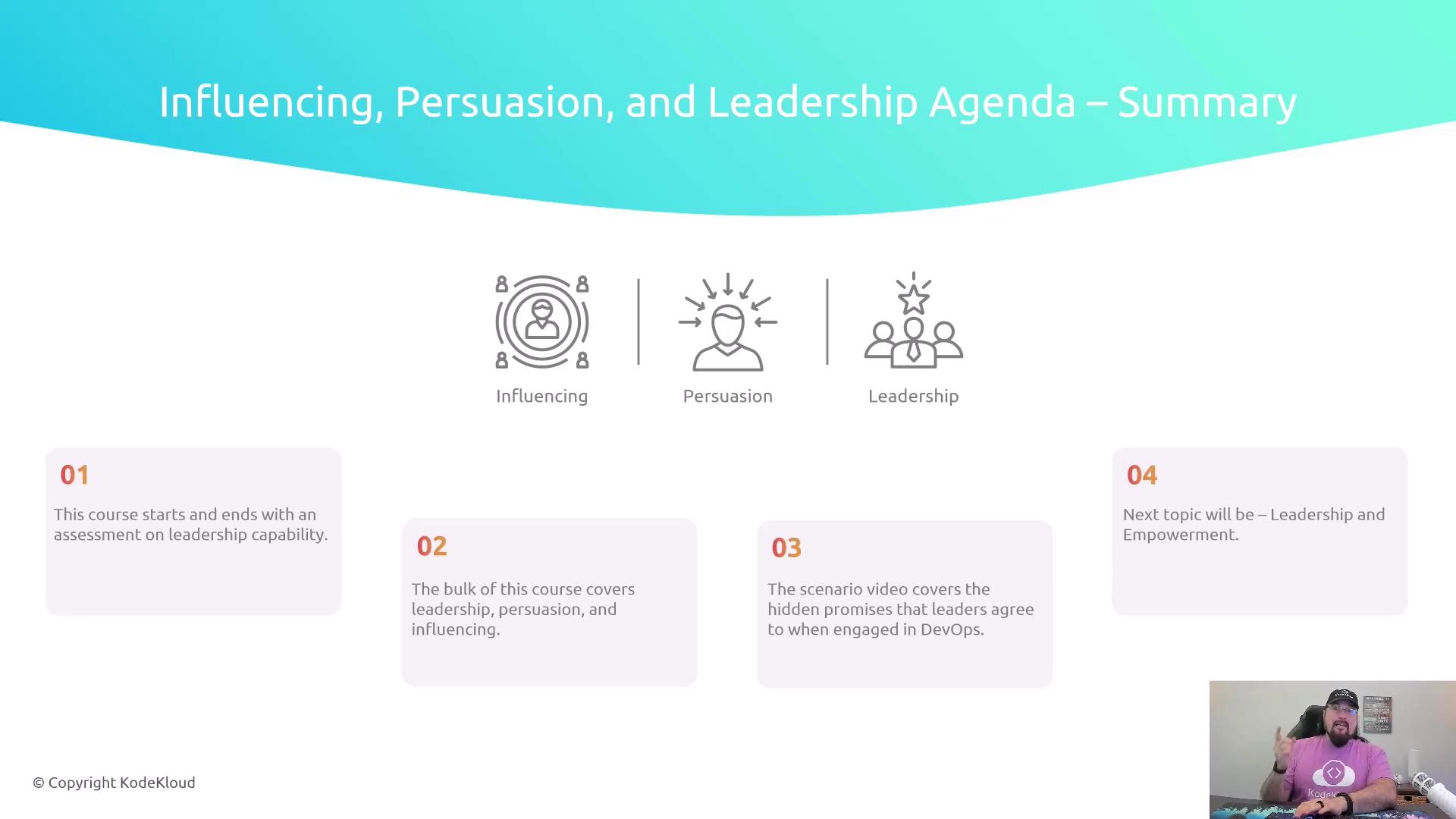
Further Reading
Watch Video
Watch video content